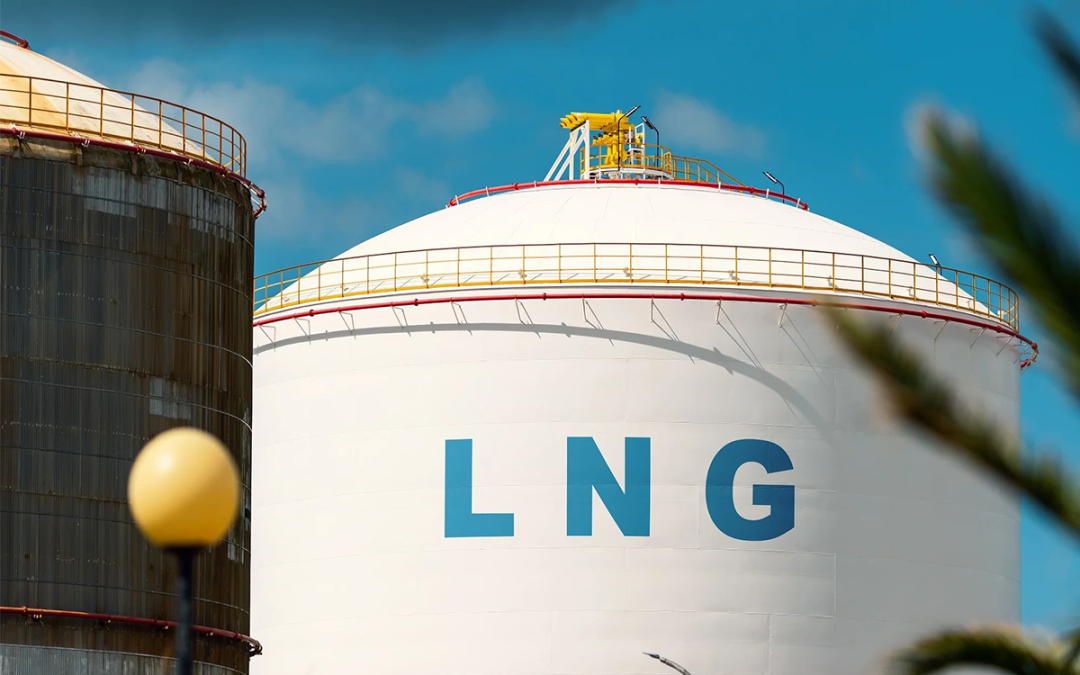Last week, the UP World LNG Shipping Index (UPI) outpaced the S&P 500, gaining 2.46% as the broader market rose by 0.67%. Despite this recovery during the shortened Christmas week, the UPI faced uncertainty as moving averages signaled mixed trends and trading activity remained subdued. Seasonal factors, such as the onset of winter, drove natural gas prices higher, though this did not translate to increased LNG tanker spot rates.
Index constituents largely posted gains, with standout performances by New Fortress Energy (+21%) and Dynagas LNG Partners (+16%), benefiting from market corrections and stable contracts. Cool Company saw its second week of growth, while other key players, including Tsakos Energy Navigation and Awilco LNG, rebounded moderately. However, sustainability remains uncertain amid prevailing resistance levels and spot rate concerns. Only Nakilat and Korea Line Corporation suffered losses, while Japanese companies approached significant resistance levels in their bid for upward momentum.
UPI & SPX Last week, the UP World LNG Shipping Index (UPI), which tracks listed LNG shipping companies, gained 3.89 points, equivalent to 2.46%, closing at 162.07 points. The S&P 500 index gained 0.67%. The chart below illustrates the performance of both indices with weekly data.
Week 53-2024: Chart of the UP World LNG Shipping Index with S&P 500 (Source: UP-Indices)
Broader view The UPI recovered during the shortened Christmas week, rising prices above previously broken support levels. However, uncertainty remains as the moving averages showed a crossover, with the shorter moving average (MA-10) crossing above the longer one (MA-40), equivalent to the 200-day average. Trading activity was lower than usual and mainly consisted of corrections to previous declines.
Meanwhile, winter has officially arrived and is driving up the price of natural gas. However, the increased demand has not yet led to a rise in spot rates for LNG tankers. On a related note, Ukraine recently received its first U.S. LNG shipment through Greek ports, while the Russian LNG tanker Pioneer returned from a four-month unsuccessful mission to Asia.
Constituents Most constituents of the UPI index experienced gains, with two rising even in double digits. New Fortress Energy (NASDAQ: NFE), which benefited from the recent market correction, saw a significant increase of nearly 21%. Dynagas LNG Partners LP (NYSE: DLNG) recorded a 16% gain, continuing its growth due to renewed dividend distributions and long-term fleet contracts.
Cool Company (NYSE/OSE: CLCO) experienced growth for the second consecutive week, rising by 5.1%. However, whether this rise indicates a correction of its previous decline or a shift toward an upward trend remains unclear.
Other notable performers that recovered from recent declines include Tsakos Energy Navigation (NYSE: TSE), which gained 4.3%; Awilco LNG (OSE: ALNG), which gained 3.1%; Flex LNG (NYSE/OSE: FLNG), which gained 2.3%, Shell (NYSE: SHEL), which gained 1.7%, BP (NYSE: BP), which gained 1.3%, and Chevron (NYSE: CVX), which gained 0.8%. It would be prudent to wait for further developments to determine the sustainability of these trends.
The Japanese trio is attempting to transition into an uptrend, with all three companies reaching significant resistance levels. “K” Line (TSE: 9107) rose by 4.6%, Mitsui O.S.K. Lines (TSE: 9104) increased by 3.5%, and NYK Line (TSE: 9101) grew by 3.3%.
Excelerate Energy (NASDAQ: EE) has shown only a slight correction of the previous decline, and the uptrend’s sustainability is questioned. Of course, the nearly sixty per cent increase in the previous three months suggests a need for a more extended break, especially given the shortened trading week.
Golar LNG (NASDAQ: GLNG) appears to be in good condition, rising 1.4% after a week of correction. However, it has experienced more corrections during its upward trend, contributing to its stability.
MISC (KLSE: 3816) is tentatively showing interest in a new growth attempt but must still overcome resistance. The stock has added two per cent to its value.
Only two companies experienced losses: Nakilat (QSE: QGTS), which fell by 2.7%, and Korea Line Corporation (KRX: 005880), which declined by 1.7%.
Our short-term outlook remains unchanged –negative– despite the rise. With the crossover of UPI and the moving averages, there is a risk of a more significant decline in the UPI. Of course, this negative assessment is mainly due to the short-term view of investors (or our reading of the candlestick charts), for whom spot rates are harmful, and plenty of attractive opportunities outside the sector exist. Our long-term view is positive, and we expect situationally or management-driven actions, such as the scrapping of steam-powered vessels, to strengthen the industry and companies in the UPI.
Established in 2020, the UP World LNG Shipping Index is a rules-based stock index family designed to measure the performance of worldwide publicly traded companies involved in the maritime transport of liquefied natural gas (LNG). This unique index covers 19 companies and partnerships worldwide, representing over 65% of the world’s LNG carrier fleet in 2020. The UP Index offers premium services with freemium and trial access to charts. With Freemium, users can access the basic UPI vs S&P 500 chart after email registration. The trial includes full access for fourteen days.
Source: By Tomas Novotny, UP-Indices.com






